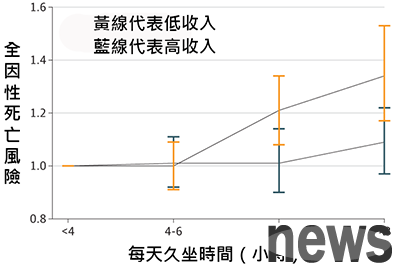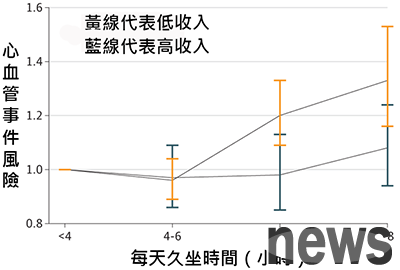Will sitting for a long time increase mortality and cardiovascular risk? Research shows the degree of correlation between income impact

JAMA Cardiology, a journal of the American Medical Association, published the day before yesterday (2022-6-15) of the Association of Sitting Time With Mortality and Cardiovascular Events in High-Income, Middle-Income, and Low-Income Countries (the association between sedentary time in high-income, middle-income and low-income countries with mortality and cardiovascular events).
First of all, I need to explain that Sitting Time means "the time to sit", but in order to make it simple, I translate it into "sitting for a long time". There are 32 authors in this article,
They are researchers from 21 countries, and the first author is Sidong Li from the Beijing Institute of Medicine. The research targeted 105,677 people from 21 countries, and 58.6% of them were women. These people were between the ages of 35 and 70 at the beginning of the study (2003-1-1), and they were visited by researchers until 2021-8-31. The countries under these research subjects were divided into the following four income levels:
High-income countries: Canada, Saudi Arabia, Sweden, and Arab United States, with a total of 14,511 peopleMiddle- and high-income countries: Argentina, Brazil, Chile, Malaysia, Poland, South Africa, Turkey, with a total of 30,907 people
Low-income countries: China, Columbia, Iran, Palestine, and the Philippines, with a total of 49,926 people
Low-income countries: Bangladesh, India, Pakistan, Tanzania, Zimbabwe, with a total of 10,333 people.
The time the subjects sat each day was divided into (1) less than 4 hours, (2) 4 to 6 hours, (3) 6 to 8 hours, and (4) more than 8 hours.


From the two charts above, it can be seen that all-cause mortality and cardiovascular events are positively related to the time of sitting every day, and the degree of this correlation is related to income. In other words, despite the same sedentary time, people with higher incomes will not have health problems.
As for why income levels affect the correlation between sitting and health, the explanation of this article is that the difference in relationships may be due to different sedentary behaviors among people with different income levels. For example, longer watching TV time is more common among people with lower social economic status and is more relevant to the results. This may be due to the simultaneous adverse nutritional habits and long-term sitting patterns. In contrast, people who sit for a long time due to professional needs usually have higher social economic status and healthier lifestyles, which may change the excessive death risk associated with sedentary time. Therefore, the relationship between sitting time and health problems may be less obvious in people with higher social economic levels. For example, the Whitehall II study found that white-level people who often exercise had no correlation between their sedentary time and mortality.
Original text: Sedentary prolonged growth in mortality and cardiovascular events, but the degree is related to income level














